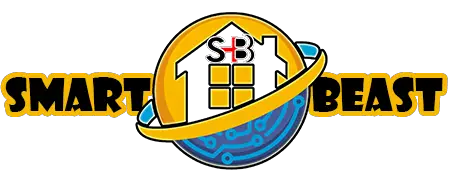
Are you one of the millions of Americans who’ve changed jobs and left a 401(k) behind? If so, you might be sitting on a hidden lever to supercharge your retirement income. Recent data reveals that nearly one-quarter of all 401(k) savings are tied up in forgotten accounts—a staggering $1.65 trillion in assets, according to Capitalize.
What’s worse, these overlooked accounts could cost savers $115 billion annually in lost growth and higher fees. But here’s the kicker: addressing this issue could boost your retirement income by a whopping 23%. That’s not just a rounding error—that’s the difference between a comfortable retirement and one where you’re constantly pinching pennies.
The good news? You don’t need a financial degree to fix this. By understanding why these accounts get forgotten, the financial hit they cause, and how to reclaim them, you can turn a financial misstep into a windfall. Let’s dive into this overlooked corner of retirement planning and transform your financial future.
The Current State of Forgotten 401(k) Accounts
The Exploding Number of Unclaimed Retirement Accounts
A silent financial tsunami in U.S. retirement savings.
$1.65 Trillion
Total assets held in forgotten 401(k) accounts.
29.2 Million
The number of forgotten 401(k) accounts in the U.S.
+23%
Potential boost to retirement income by addressing the issue.
Growth of Forgotten Accounts (2021 vs. 2025)
The “Great Resignation” dramatically accelerated the trend of leaving retirement accounts behind.
Let’s start with the reality: forgotten 401(k)s are everywhere. Capitalize estimates there are now 29.2 million of these accounts in the U.S., representing $1.65 trillion in assets. That’s a 23% surge since May 2021.

Why? Blame the “Great Resignation,” when 47 million Americans quit their jobs in 2021 alone, often leaving retirement accounts in the rearview mirror. This isn’t just a problem for big corporations either. Small businesses, startups, and even nonprofits are part of the issue.
Think about it: how many ex-colleagues have you lost touch with over the years? Multiply that by the number of jobs you’ve had, and you start to see how easy it is to misplace a 401(k). These accounts aren’t just small potatoes either. Many forgotten accounts hold tens of thousands of dollars—some even six figures.
The real kicker? They’re often stuck in outdated investment options or riddled with fees that quietly erode your savings. Every day these accounts stay forgotten, you’re effectively giving away potential retirement income.
Why Do 401(k)s Get Forgotten?
Why Your 401(k) Gets Lost: The Friction Points
It’s not just forgetfulness – it’s decision fatigue & administrative hurdles.
Job-Hopping Without Follow-Up
New job excitement pushes transfers to the back burner. ‘One more thing’ becomes a forgotten thing due to decision fatigue.
Out of Sight, Out of Mind
Small balances feel insignificant, and unseen money feels less urgent to reclaim.
Administrative Nightmares
Tracking old employers, deciphering jargon, and navigating paperwork creates a headache that encourages procrastination.
The Paradox of Choice
Being overwhelmed by complex rollover choices and instructions often leads to deferring the task indefinitely.
Let’s get real: it’s not like we’re intentionally neglecting our retirement. The problem is a mix of life getting busy, systems that aren’t built for job-hoppers, and a lack of clear guidance. Here’s what typically happens:
Job-hopping without follow-up: Changing jobs is exciting—but all that onboarding at a new company often pushes “transfer my old 401(k)” to the back burner. Before you know it, years have passed, and you’ve lost track of where that money even is.

Out of sight, out of mind: Small account balances can feel like they’re not worth the hassle. But here’s the thing: even a $5,000 account growing at 7% annually becomes over $30,000 in 20 years. Neglect those “little” accounts, and you’re leaving serious money on the table.

Administrative nightmares: Transferring a 401(k) isn’t as simple as clicking a button. You’ve got to track down old employers (some of which might not even exist anymore), decipher plan documents, and navigate paperwork. It’s a headache—but one that pays off big time.

As someone who’s studied this issue, I’ve seen firsthand how these barriers stack up. But here’s the secret: once you break through the initial frustration, the process gets easier—and the rewards are well worth it.
The Cost of Forgotten 401(k)s: It’s Worse Than You Think
The Hidden Cost: Lost Growth & Fees
The silent erosion of your retirement wealth through missed growth and excessive fees.
Proactive Saver vs. Forgotten Account (20 Years)
A $10,000 investment over two decades shows a stark difference based on active management vs. neglect.
Fees: The Silent Killer 📉
A 1% higher fee might seem small, but on a $100,000 portfolio over 30 years, it can erode nearly 28% of your total returns—that’s **$28,000 lost** to avoidable fees.
The Power of Compounding ⏳
Based on the Rule of 72, money earning 7% growth doubles every 10 years. At 2%, it takes a lifetime—36 years—to double. Time is your most valuable asset.
Let’s talk numbers. Imagine two savers, both starting with $10,000 in a 401(k). One actively manages it, investing in a balanced portfolio with low fees. The other leaves it in a default money market fund with higher fees. After 20 years, the proactive saver might have $40,000. The forgotten account? Closer to $15,000. That’s a $25,000 difference—just for doing nothing.

And fees? They’re a silent killer. A forgotten account might charge 1–2% in annual fees, while a consolidated IRA could drop that to 0.2%. On a $50,000 balance, that’s $500–$1,000 saved every year—money that could be growing instead of shrinking.
Then there’s the emotional cost. I’ve spoken with folks who stumbled upon old 401(k) statements decades later, only to realize they’d missed out on decades of growth. The regret is palpable. But here’s the thing: you can’t change the past, but you can fix the present—and that’s where the real opportunity lies.
How to Reclaim Your Forgotten 401(k) Wealth
So, what’s the solution? It boils down to three steps: locate, consolidate, and optimize. Here’s how to make it happen:
Your 3-Step Retirement Reconnaissance Toolkit
Locate, Consolidate, Optimize – Your path to a 23% boost.
Locate Your Lost Accounts
Dig through old emails and tax filings. Contact former employers. Use free tools like the DOL’s ERISA database, Capitalize, and the IRS Missing Participant Program.
Consolidate Your Funds
Roll your old 401(k)s into your current employer’s plan for simplicity or into an IRA for greater investment flexibility and potentially lower fees.
Optimize Your Investments
Work with an advisor or use low-cost index funds to build a diversified portfolio. Rebalance annually to stay on track with your long-term growth goals.
1. Locate Your Lost Accounts
Start by digging through old records—employment documents, tax filings, even email archives. Contact former employers directly; they’re legally required to help you access your account. If that fails, use free tools like the U.S. Department of Labor’s database or private services like Capitalize. Pro tip? Keep a running list of all your old employers and account numbers. It’ll save you hours down the road.
2. Consolidate Your Accounts

Once you’ve found your stray 401(k)s, consider rolling them into your current employer’s plan or an IRA. IRAs offer more investment flexibility, while employer plans might include matching contributions. Either way, consolidation simplifies your finances and puts you back in the driver’s seat.
3. Optimize Your Investments
Here’s where the real magic happens. Many forgotten 401(k)s are stuck in outdated, high-fee investments. Work with a financial advisor or use low-cost index funds to build a diversified portfolio. Rebalance annually to keep your risk level in check. Remember: the goal isn’t to time the market—it’s to capture long-term growth.
I’ve seen this process transform people’s retirement outlooks. One friend consolidated three old 401(k)s and boosted her annual returns by 2%. Doesn’t sound like much? At her balance, that’s an extra $150,000 by retirement. Not too shabby for a few afternoons of work.
Real-Life Examples of the Forgotten 401(k) Lever in Action
Let’s bring this to life with some real-world scenarios. Sarah, a 45-year-old teacher, discovered she had three forgotten 401(k)s from early jobs. After some detective work, she rolled them into an IRA and reallocated the investments.
The result? Her projected retirement income jumped by 20%. Then there’s Mark, a tech professional who changed jobs six times in 15 years. By consolidating his accounts, he not only simplified his finances but also freed up $200/month in reduced fees—money he now redirects to his Roth IRA.

What’s fascinating is how these wins compound. One retiree I spoke with, Linda, found a 20-year-old 401(k) with $12,000. She rolled it into her IRA, which now stands at over $75,000 thanks to consistent contributions and market growth. These stories aren’t anomalies—they’re blueprints. Each started with the simple act of asking, “What old accounts do I have?” and built from there.
Policy and Regulatory Support: New Tools to Help You
The government and private sector are finally waking up to this issue. The SECURE 2.0 Act of 2022 includes a long-overdue database to track forgotten workplace retirement plans. While it’s still rolling out, it’s already helping savers locate accounts. Additionally, some states are creating “lost and found” systems for retirement money.

On the private side, companies like Capitalize and Blooom offer tools to search for and manage old 401(k)s—often for a small fee that’s worth it if you’re short on time. The IRS also has a little-known tool called the “Retirement Plan Missing Participant Program,” which helps former employees track down their money. These resources level the playing field, giving everyday savers the tools to fight back against forgotten accounts.
The Hidden Psychology of Forgotten 401(k)s
There’s an emotional layer to this issue that’s worth acknowledging. Many people feel guilty about “abandoning” old accounts, while others are paralyzed by the perceived complexity of fixing it. I’ve heard variations of, “I don’t even remember the login info” or “I’m scared I’ll make a mistake.” These are normal feelings—but they’re also barriers.

Here’s a mindset shift: think of this not as a chore but as a financial audit. Every account you recover is a step toward freeing up mental bandwidth. And remember, you don’t have to do it all at once. Start with one old employer, spend an hour researching, and see where it leads. The momentum you gain from that first win will fuel the rest of the process.
How to Turn This Knowledge into Lasting Financial Habits

The real win isn’t just finding old accounts—it’s building systems to prevent this from happening again. Here’s how:
Create a retirement inventory: List every 401(k), IRA, and pension you’ve ever had. Update it whenever you change jobs. Store it securely (digital or physical) where a spouse or trusted person can access it.
Set calendar reminders: Schedule annual account reviews. Treat them like doctor’s appointments—non-negotiable.
Automate where possible: Many IRAs let you set up automatic contributions. If your employer’s 401(k) allows post-retirement management, use it.
Leverage technology: Use password managers to store login details. Apps like Personal Capital can aggregate account balances in one place.
By systematizing this, you turn a one-time fix into a financial habit. And habits, as we know, are the foundation of long-term wealth.
Conclusion
The forgotten 401(k) lever is one of those rare financial fixes that’s both high-impact and relatively simple. By reclaiming old accounts, consolidating them, and putting sensible systems in place, you’re not just adding a few percentage points to your returns—you’re rewriting your retirement script.
That 23% bump? It could mean retiring two years earlier, traveling more, or finally starting that business you’ve dreamed of.
Here’s the honest truth: this won’t be the most exciting afternoon you’ve ever spent. But it will be one of the most consequential. So, grab a coffee, pull out those old records, and start the hunt. Your future self will send you a thank-you note—probably from a beach somewhere.







